A review of ‘AJ and the Queen’ and a lot more.
Drag queens have recently become the target of right-wing politicians in several Republican-dominated states, and while I’ve never been a drag queen and have seen only a few drag shows, I feel moved to write something on this topic.
I’m a gay men with decades of experience in the gay community and a strong feminist consciousness, and I also like to think I have a healthy sense of humor and the ability to avoid stifling dogma.
Full disclosure: I have put on women’s dresses a few times myself.
Full disclosure: I have put on women’s dresses a few times myself to participate in a party or because a friend coaxed me into it to prove I’m not “up tight.” Back in the 1970s, when bearded men like me wore dresses, it was called “genderfuck.” I also tried my mother’s lipstick once — it tasted bad and that was the end of that.
Before further commenting on drag queens in the news of the day, I want to call your attention to AJ and the Queen, a relevant and entertaining TV show. While searching on Netflix for something to watch, my partner and I came upon a series starring RuPaul, certainly America’s best-known drag queen.
RuPaul Andre Charles, 63, is an African-American gay man (married to another man) best known for producing, hosting, and judging the reality competition series, RuPaul’s Drag Race — and he’s won many awards. Learn more about him on Wikipedia.
AJ and the Queen is a one-season show with 10 episodes; it was just announced by Netflix that there will be no second season.
AJ is a 10-year-old girl runaway, Amber Jasmine, played by an actress named Izzy G., and the queen is Ruby Red (a character much like RuPaul himself). The series is about a road trip, with Ruby Red traveling to earn money in drag shows in various cities while AJ (sadly alienated from her mother who is an addict and sex worker) hopes Ruby will deliver her to her grandfather in Texas.
Gender politics enters briefly in the series, as AJ is, at the outset, dressed as a boy.
Gender politics enters briefly in the series, as AJ is, at the outset, dressed as a boy. AJ tells Ruby Red that she has disguised herself as a boy “because boys have it easier,” but Ruby reassures AJ that it’s OK to be a girl — and she drops the disguise.
What I liked the most about this series is its insight into drag as an established aspect of modern gay male subculture, featuring all the elaborate costumes and wigs, and the gay bars in cities large and small all over the USA that feature drag shows. The viewer gets to meet Ruby’s friend, a costume designer who is having an affair with a gay police officer, as well as many drag queens in the various clubs.
There are some insights into the competitive and sometimes bitchy nature of the drag world, as well as the true respect for female entertainment icons such as Cher and Diana Ross.
The series is entertaining but sometimes the dialogue gets a little preachy and the confusing plot involves a pair of odd villains. One of them is a nasty woman with an eye patch and the other is Ruby Red’s former boyfriend, a grifter.
Let me be clear by stating that drag is not the same as transgender.
Let me be clear by stating that drag is not the same as transgender. Drag queens, possibly with some exceptions, are “trans” in the most “transitory” way – that is, they are men (almost always gay men) who impersonate women using elaborate costumes. They don’t want to be women.
I was confident that I could define “drag queen” in this article without help, but I decided to go to Google and ask “What is a drag queen?” I got a very good answer with a referral to the Wikipedia page where it says this:
A drag queen is a person, usually male, who uses drag clothing and makeup to imitate and often exaggerate female gender signifiers and gender roles for entertainment purposes. Historically, drag queens have usually been gay men, and have been a part of gay culture.
That’s a perfect definition, as far as I am concerned.
Here’s another useful definition I found of the word “drag,” showing a broader use of the term:
The term ‘drag’ refers to the performance of exaggerated femininity, masculinity, or other forms of gender expression, usually for entertainment purposes. Drag usually involves cross-dressing. A drag queen is someone (usually male) who performs femininity and a drag king is someone (usually female) who performs masculinity. Performances often involve comedy, social satire, and at times political commentary. The term may be used as a noun as in the expression in drag or as an adjective as in ‘drag show.’
Ru Paul makes it quite clear in this series that he is a gay man in the world of entertainment, not someone who is dissatisfied with being male and desirous of becoming female. And that is a fair way to describe most drag queens.
There are heterosexual men who like to dress in women’s clothes because it excites them.
It can get complicated. There are heterosexual men who like to dress in women’s clothes because it excites them (sexual arousal) — but they want to have sex with women, not with other men. Hundreds of such heterosexual men, sometimes called crossdressers or transvestites, gather with some gay transvestites annually for Fantasia Fair in October in Provincetown, Mass. The first such fair was held in 1975, so this is not news. And it’s not controversial.
Drag has been around a long time, and in various forms. The Jewel Box Revue, founded in 1939, was a troupe of “female impersonators” (the term they used) who performed in many venues around the United States over several decades. The cast of this show, primarily gay men, dressed and performed very convincingly as women, and for the most part, they did not perform in gay venues, but in nightclubs where the audiences were primarily heterosexual. My impression is that straight men were intrigued by these very attractive individuals who looked just like women but who, it was crystal clear, did not have vaginas. There was humor in that simple scenario.
 Drag shows in gay bars essentially attract a gay male audience, with perhaps some lesbians and straight people. Over decades, television and movies brought drag to a wide audience. Milton Berle, one of the biggest stars of TV in the 1950s, regularly was seen on the tube in drag. In 1949, Berle graced the cover of Newsweek magazine all dolled up like Carmen Miranda. Flip Wilson, a black comedian, developed a character named Geraldine who was very popular. In Some Like it Hot (1959), two male musicians played by Tony Curtis and Jack Lemon, witness a mob hit and flee the state in an all-female band disguised as women.
Drag shows in gay bars essentially attract a gay male audience, with perhaps some lesbians and straight people. Over decades, television and movies brought drag to a wide audience. Milton Berle, one of the biggest stars of TV in the 1950s, regularly was seen on the tube in drag. In 1949, Berle graced the cover of Newsweek magazine all dolled up like Carmen Miranda. Flip Wilson, a black comedian, developed a character named Geraldine who was very popular. In Some Like it Hot (1959), two male musicians played by Tony Curtis and Jack Lemon, witness a mob hit and flee the state in an all-female band disguised as women.
A struggling actor played by Dustin Hoffman cross-dressed for success in the 1982 movie, ‘Tootsie.’
A struggling actor played by Dustin Hoffman cross-dressed for success in the 1982 movie, Tootsie. In more recent years, Tyler Perry created and played the part of Mabel “Madea” Simmons, a tough elderly woman, in several films. And let’s not forget Les Ballets Trockadero de Monte Carlo, which was founded in 1974 by a group of trained ballet dancers for the purpose of presenting a playful, entertaining view of traditional, classical ballet in parody form. The all-male troupe members wear ballerina clothing and do the ballerina steps, while the performers’ off-stage sexual orientation is not an issue and not discussed. I saw them perform recently at the University of Massachusetts Fine Arts Center, and they are talented and entertaining.
For decades, all of this cross-dressing in the media, as far as I could determine, was not controversial, not discussed in the political arena. It was just entertainment, mostly seen as something to laugh at, or at least to smile or chuckle at, not something to rant and rave against.
So what happened? It seems to me that the current anti-drag politics is an offshoot of the endeavor to deny any rights or freedom of choice to transgender individuals. Laws restricting transgender people, passed in several states, with more on the way, seem to be paving the way for action against drag queens.
Most of the politicians taking this path were already against same-sex marriage.
Most of the politicians taking this path were already against same-sex marriage. The Republicans, after all, have steadfastly opposed gay rights legislation in the U.S. Congress for many years.
The idea that homosexuality is related to pedophilia — sex with children — has been floating around right-wing circles for decades. When Anita Bryant launched her anti-gay campaign in Florida in the 1970s, it was called “Save Our Children.” Lately, the hateful right-wingers are accusing drag queens of “grooming” children for sex. A few years ago, drag queens in San Francisco launched something called Drag Story Hour (DSH), and this seems relevant to current events. Here’s what it says on the DSH website:
What is drag story hour? It’s just what it sounds like! Storytellers using the art of drag to read books to kids in libraries, schools, and bookstores. DSH captures the imagination and play of the gender fluidity of childhood and gives kids glamorous, positive, and unabashedly queer role models. In spaces like this, kids are able to see people who defy rigid gender restrictions and imagine a world where everyone can be their authentic selves! Drag Story Hour (DSH) was created by Michelle Tea and RADAR Productions, under the leadership of Julián Delgado Lopera and Virgie Tovar, in San Francisco in 2015. It started out as drag queens reading stories to children in libraries and grew into a global phenomenon! DSH now offers literary and creative programming for kids and teens of all ages led by drag queens, kings, and all other royal beings! DSH is a national 501 c 3 non-profit with a global network of local organizations, each of which is independently managed and funded.
Drag queens reading stories to children is not sexual activity, but the right-wingers suggested something illicit was going on.
Laws were passed in Texas and Florida restricting drag activities.
Laws were passed in Texas and Florida, and perhaps elsewhere, restricting drag activities. In Florida, the legislature acted after Gov. Ron DeSantis’ administration filed a complaint against the Hyatt Regency Miami hotel for hosting a “Drag Queen Christmas” event last December.
A portion of the population goes along with this, but there has been pushback. For example, a popular restaurant in Orlando that hosts drag brunches filed a lawsuit against DeSantis, claiming it lost business because of the new law signed last week that has been widely interpreted by LGBTQ advocates as a crackdown on drag shows.
The owner of Hamburger Mary’s Orlando says their First Amendment rights were violated when DeSantis signed a bill, SB 1438, restricting the attendance of children at certain performances, according to the lawsuit. The restaurant is asking the court to block the implementation of the law. “This bill has nothing to do with children, and everything to do with the continued oppression of the LGBTQ+ community,” a statement posted on the restaurant’s Facebook page reads, adding: “Anytime our legislators want to demonize a group, they say they are coming for your children. In this case, creating a false narrative that drag queens are grooming and recruiting your children with no factual basis or history to back up these accusations AT ALL”
An acquaintance of mine recently posted a comment on Facebook indicating that the anti-drag politics has become quite public. He wrote:
Last weekend the family watched ‘The Birdcage.’ Neither of the kids had seen it, and I always remembered liking it. And, it has a great cast with Robin Williams, Nathan Lane, Gene Hackman, and Dianne Wiest. Hank Azaria has a notable performance, too. The movie is now 27 years old and the story centers on a gay couple (Williams and Lane) that owns the most popular drag club in South Beach, Miami, Florida. Lane is the star attraction at the club. Hackman plays a pious ‘moral majority’ conservative Senator from Ohio and Wiest his clueless homemaker wife. It won an Oscar for costume design and was nominated for art direction. Nathan Lane (one of the few to ever steal the spotlight from Williams) was nominated for a Golden Globe for Best Supporting Actor. The movie holds up well. But you can imagine the roar if it was made today and how many red states would attempt to ban it.
The LA Dodgers were set to honor the Sisters of Perpetual Indulgence, a historic LGBTQ service and charitable group, on the baseball club’s Pride night in June. The Dodgers rescinded the honor under pressure from some notorious anti-LGBTQ bigots. The Dodgers then got tons of flak and restored the honor for the Sisters.
Here’s a link to a Randy Rainbow video mocking Florida Gov. DeSantis. There are frequent references here to gay humor, including drag queens, and Randy himself appears both as a man in a necktie and a woman in dresses
This issue has come close to my home, in the small town of North Brookfield, Mass.
This issue has come close to my home, in the small town of North Brookfield, Mass. A married couple in that town failed in their effort to put a stop to the Rural Justice Network’s Small Town Pride drag performance scheduled June 24 on the town common. They circulated a petition trying to recall two elected town officials and seeking to cancel the performance, complaining of “blatant support of immorality.” Aided by the American Civil Liberties Union, the officials refused to cancel the event.
Back in the 1970s, some gay men seeking to strengthen our alliance with lesbians and other women, took a closer look at drag entertainment, and raised some important questions.
One of these men, recalled this in a message to me:
Perhaps most tellingly, we sincerely asked, ‘How did drag differ from blackface?’ Wasn’t drag parallel to this once popular practice of stage and screen — white men blackening their faces with burnt cork to create farcical imitations of black men in straw hats playing banjos? Or think of Al Jolson in heavy blackface singing ‘Mammy’ in ‘The Jazz Singer.’ Wasn’t blackface correctly condemned for demeaning black people in much the same way as male drag demeans women? Blackface had been removed from entertainment spaces as having been an example of blatant racism. Why was drag still permitted?
But beyond this, the specific public conduct of drag queens vis-a-vis women at that time truly deserved censure. These were the days when in New York City’s gay clubs and bars drag queen performers continually offended with their negative attitudes towards women and the language they used to describe them. Drag acts won laughter and applause from their gay male audiences by continually making women the butt of their jokes. Common drag humor included calling women bitches, cunts, fish, and referring to women’s supposedly smelly vaginas.
It is rare for today’s drag queens to carry on with such vulgar anti-women humor.
However, this friend and I had a conversation recently about this topic, and we agree that it is relatively rare for today’s drag queens to carry on with such vulgar anti-women humor. We concluded that for the most part, drag queens nowadays use costumes, wigs, exaggerated makeup and often musical talent to entertain their audiences. They might even bore some audiences — as someone told me recently — but they have a lot of talent, a lot of nerve, and they can be quite funny, too. I can’t imagine them hurting anyone, except maybe another drag queen who tries to hide their makeup kit!
On a visit to a gay bar in Sarasota, Florida, last February, I met an elderly drag queen (that’s a rarity) who went by the stage name of Grandma Pearl. After singing, like many drag queens in gay bars, she wandered around accepting donations, and I chatted with her for a few minutes. Grandma Pearl told me that as a young man, he performed in the circus as a trapeze artist and clown, and that’s what brought him to Sarasota decades ago. Here’s a photo of me with Grandma Pearl. And you can also see a photo of me taken about 25 years ago when I put on a dress at a party some friends were having.
I’d like to end this blog entry with two photos of my friend, the late John Burton, a gay man who liked to dress up in drag for parties, especially costume parties. In one photo, you will see him as Marie Antoinette, Queen of France, and if you look carefully in the headdress, you’ll see it’s a cage with a live white rat in it! In the other photo, John is a rather lovely, though somewhat skinny, Miss Liberty. John died of AIDS in 1991 but his memory lives on. I honor John as one of my friends who did good quality drag.
[Allen Young has lived in rural North Central Massachusetts since 1973 and is an active member of several local environmental organizations. Young worked for Liberation News Service in Washington, D.C., and New York City, from 1967 to 1970. He has been an activist-writer in the New Left and gay liberation movements, including numerous items published at The Rag Blog. He is author or editor of 15 books, including his 2018 autobiography, Left, Gay & Green; A Writer’s Life — and a review of this book can be found in the Rag Blog archives.]

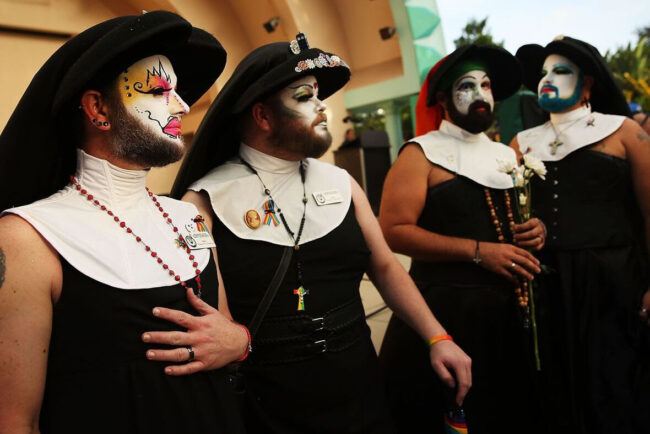
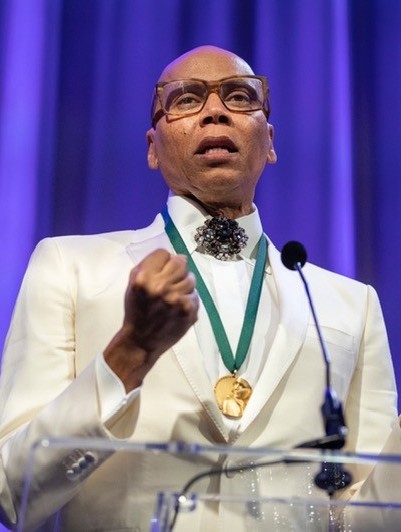
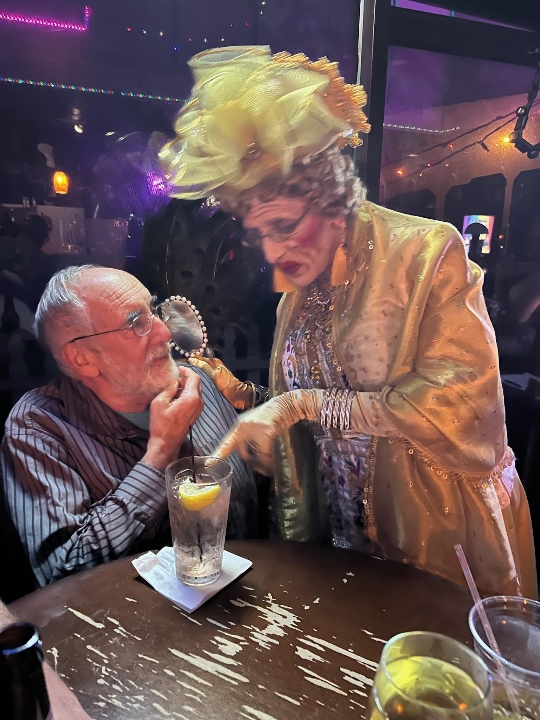
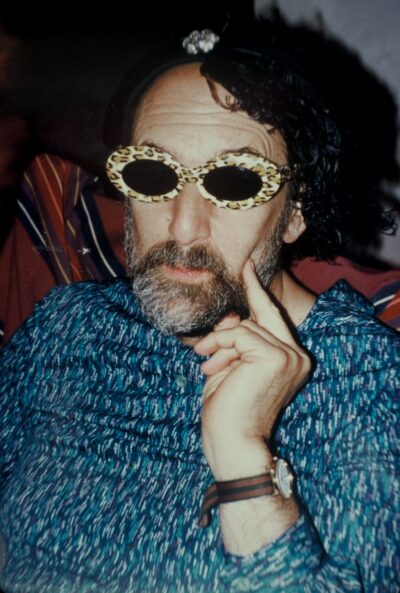
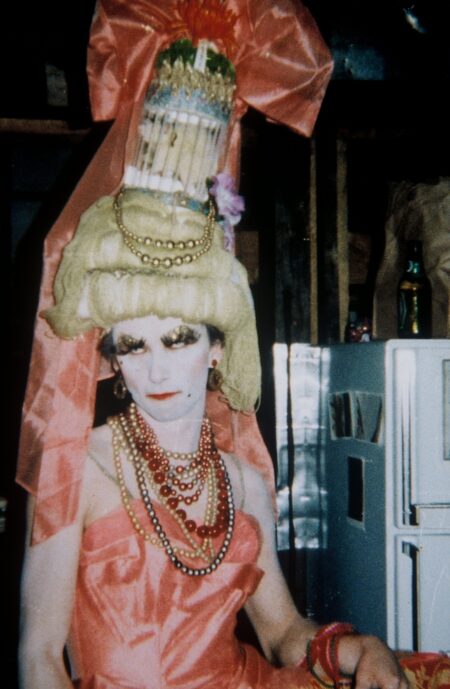
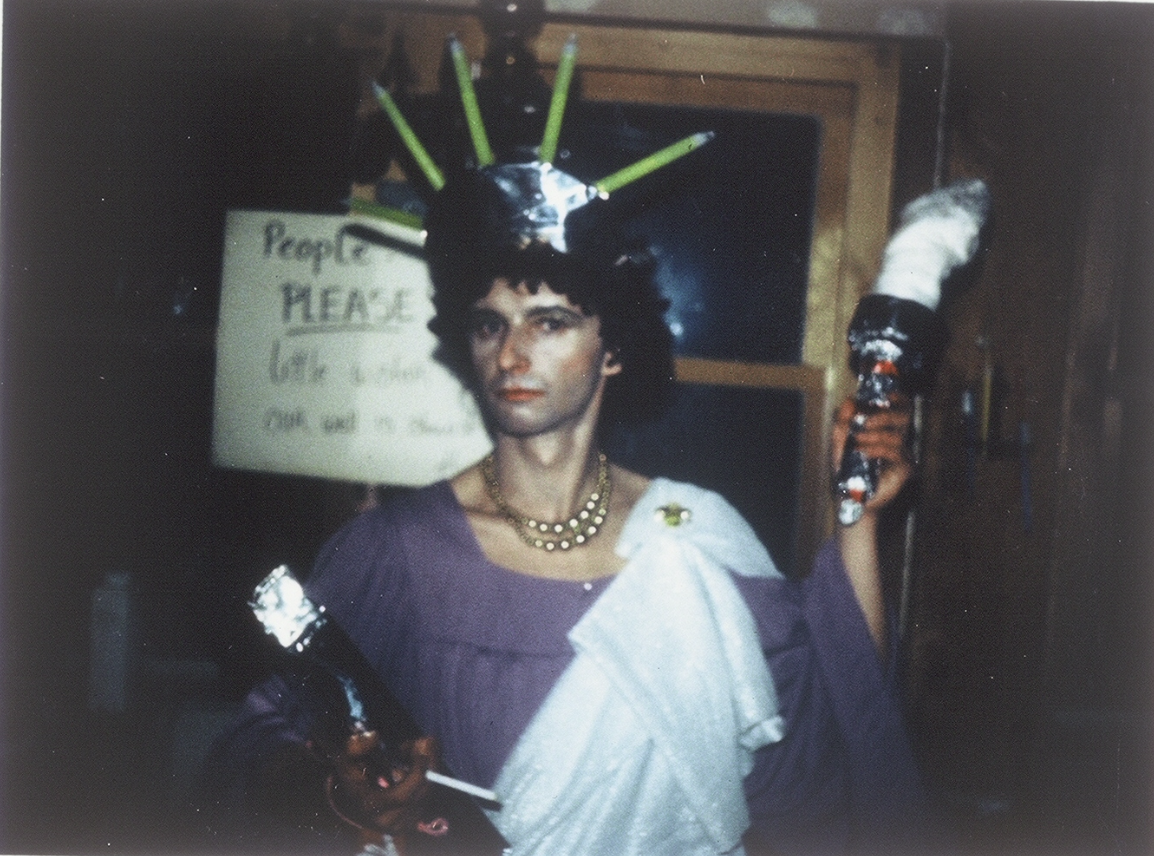

















Very well researched and thought out discussion of the history of drag, as well as present day polarization and decades of calmer political history.
This is a very informative and valuable story. It clarified a great many issues for me.
I agree. An excellent survey of the history and issues.
Good piece, Allen. I love the Sisters of Perpetual Indulgence for bringing laughter to a Gay Pride March in Washington, DC, when the Baptist minister Fred Phelps and his family showed up to tell us that AIDS was God’s punishment. They diffused what might have turned into a violent situation.
In 1974, I recall being at a University of Michigan gay event and the women in the room protested the drag performance by men who were their passionate allies.
The discussion of drag brings in many components including Shakespearean actors. Dame Edna Everage, portrayed by Barry Humphries, is another example of a straight man making his living dressed in drag.
I have a friend who is a successful drag entertainer in Provincetown. His husband shared that he was married to to different people the one who dished ice cream during the day and the other who transformed themselves into a female character at night,
When Drag Queens are fun and funny, everyone can have a good time. When they’re mean, they’re using a costume to express their hatred.
A fine overview of the Drag expressions through time.
The comparison with Blackface was new to me and rather insightful.
Allen:
You really did a great job in addressing many of the nuances of this issue including the historical misogyny within the gay male community. As you indicate, drag in the gay male community and perhaps the parallel in the lesbian community is very much part of the culture hence the importance of embracing its tongue in cheek function. I recall Susan Sontag’s “Notes on Camp” where she essentially defines drag as “A sensibility that revels in artifice, stylization, theatricalization, irony, playfulness, and exaggeration rather than content.” I think it is important to add what I believe is embedded in drag is the idea of gay men being feminine, effeminate or women like. I believe that the drag tradition is fueled by the sentiment that we’re going to embrace that characterization and take a few steps forward. This perhaps gets at the discomfit that many Americans still feel about anything that challenges the gender binary. Republicans know that and they’re doing everything they can to exploit it for their own malicious political ends regardless of whether they really care about these issues.
Maybe worth saying that women have historically been barred from taking part in theatrical productions in many nations. All of the female characters in Shakespeare’s plays, e.g., had to be played by women. The comparison to blackface is quite apt in this sense: both were used to substitute for female and/or Black would-be performers who could not take the stage.
I’m not real clear on the differences between the two forms of playacting. Putting on blackface seems not to have been widely practiced outside the theater except by “Black Like Me” author John Howard Griffin. Cross-dressing, however, is a lot more practiced by straight men, imo, than is commonly thought; apparently wearing silk panties is more of a turn-on to many men than jeans and T-shirts are to me.
It seems that drag queen story hours, perceived as very threatening by anti-LGBTQ+ bigots, are being used today as a wedge issue to attack everything from gender-affirming medical care to public libraries. Yet the same people who are frightened by men wearing eye shadow refuse to see the actual threat of gun-toting crazies.
It’s difficult to see how this irrational worldview can be altered. Hypermasculinity is harmful to children and other living beings. How can it be neutralized?
I’m pleased that (after thinking about it for a while) I decided to write this article, which is, admittedly, rather long. I think the variety of comments here adds to the content of my article, and I’m grateful to the individuals who commented for sharing their insights and awareness and concerns.
I just read your article on drag and wanted to tell you that I liked it. You explained a lot of things I was not aware of and the photos were great. Thanks for sharing it.